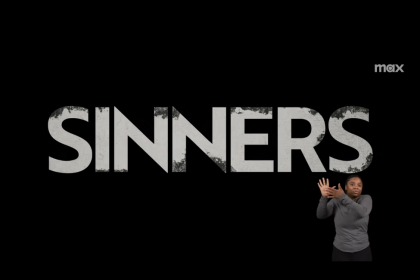Sinners maintains its allure with audiences nationwide as supernatural storytelling and cultural resonance drive continued success
Unexpected staying power
The supernatural thriller Sinners has maintained its dominance at theaters nationwide, securing the top position for a second consecutive week in an increasingly competitive marketplace. Following its remarkable opening weekend that generated $48 million in domestic ticket sales, the film demonstrated impressive resilience by adding another $45 million to its total.
The film’s strong performance has propelled its worldwide earnings to $163.2 million, establishing it as one of the season’s most commercially successful releases despite facing stiff competition from several high-profile studio offerings.
Industry analysts note that horror-adjacent films typically experience significant declines in their second weekend, often dropping 60-70 percent from opening numbers. Sinners has defied this trend with only a minimal decrease, indicating exceptional word-of-mouth and repeat viewings driving its continued success.

Period setting enhances supernatural elements
Set against the evocative backdrop of 1930s Mississippi, Sinners creates an atmospheric experience that transports viewers to the Depression era while exploring supernatural themes. The film meticulously recreates the period through detailed production design, authentic costumes, and careful attention to historical context.
This temporal setting provides fertile ground for exploring the intersection of folklore, family dynamics, and cultural identity. The film incorporates elements of traditional vampire mythology while reimagining these concepts through the lens of African American experiences during a pivotal historical period.
The Depression-era setting also enables the film to examine class dynamics and economic hardship as additional layers of tension within the narrative. Characters navigate not only supernatural threats but also very real societal pressures, creating a multidimensional storytelling experience that resonates beyond typical genre constraints.
Musical elements elevate storytelling
Perhaps the most distinctive aspect of Sinners is its incorporation of Delta Blues music as both narrative device and emotional underpinning. Rather than merely serving as period-appropriate soundtrack, the music becomes integral to the plot and character development.
The film’s score, composed by Ludwig Göransson, seamlessly blends traditional Blues compositions with contemporary horror elements to create a sonic landscape that enhances the viewing experience. Several pivotal scenes utilize music as a catalyst for supernatural events, connecting cultural expression with the film’s horror elements.
Music serves as both salvation and warning throughout the narrative, with characters finding both solace and danger in its rhythms. This approach creates a unique sensory experience that distinguishes Sinners from conventional horror offerings while honoring the cultural significance of Blues traditions.
Ensemble cast delivers nuanced performances
The film features an accomplished ensemble cast including Michael B. Jordan, Wunmi Mosaku, Jack O’Connell, Delroy Lindo, and Hailee Steinfeld, each bringing considerable depth to their respective roles. Jordan portrays the conflicted protagonist with restraint, allowing smaller moments to reveal character rather than relying on excessive exposition.
Mosaku delivers a particularly compelling performance as a community matriarch harboring generational knowledge about supernatural forces. Her character serves as both protector and historian, embodying the film’s themes of cultural memory and preservation against existential threats.
Veteran actor Delroy Lindo brings gravitas to his role as a blues musician whose compositions contain hidden warnings about vampiric presence in the region. His character serves as a bridge between the artistic and supernatural elements of the narrative.
The chemistry among the ensemble creates believable community dynamics, making the supernatural threat more impactful as it disrupts established relationships and forces characters to confront both external dangers and internal conflicts.
Directorial vision merges genres
Director Ryan Coogler continues his trajectory of creating culturally significant cinema that transcends genre expectations. Following his success with Black Panther and the Creed franchise, Coogler applies his distinctive visual style and thematic interests to horror conventions.
The film demonstrates remarkable tonal control, shifting between moments of genuine terror, emotional poignancy, and occasional humor without creating jarring transitions. This balanced approach allows Sinners to appeal to horror enthusiasts while attracting viewers who might typically avoid supernatural thrillers.
Coogler’s direction emphasizes character development and worldbuilding over excessive jump scares, creating a more immersive and psychologically engaging experience. The film’s horror elements emerge organically from the setting and characters rather than feeling artificially imposed for shock value.
This approach aligns with contemporary trends in elevated horror cinema while maintaining accessibility for mainstream audiences, contributing to the film’s broad appeal and commercial success.
Visual storytelling enhances thematic elements
Cinematographer Rachel Morrison, who previously collaborated with Coogler on Black Panther, creates striking visual contrasts throughout the film. Night scenes utilize shadows and minimal lighting to heighten tension, while daytime sequences feature golden-hour illumination that creates a deceptive sense of warmth and safety.
The visual language of the film incorporates elements of both classic horror cinematography and period drama aesthetics, creating a distinctive look that serves the narrative’s dual nature. Careful framing and composition techniques reveal information gradually, allowing suspense to build naturally.
Color grading shifts subtly throughout the film, becoming increasingly desaturated as supernatural elements intensify. This technique creates visual coherence while reinforcing the thematic progression from everyday reality to supernatural incursion.
Cultural authenticity resonates with audiences
Sinners has garnered particular praise for its thoughtful integration of Black cultural elements and historical context. Rather than using these elements as superficial backdrop, the film incorporates them meaningfully into its narrative structure and character motivations.
The vampire mythology presented in the film draws parallels with historical exploitation and resistance, creating subtext that enriches the viewing experience without overwhelming the primary narrative. This approach allows the film to function simultaneously as entertaining genre piece and thoughtful cultural commentary.
Community rituals, musical traditions, and familial relationships are depicted with nuance and specificity, avoiding broad generalizations while creating authentic representation. These elements provide emotional anchoring for the supernatural components, making the stakes feel consequential beyond typical horror conventions.
Critical and commercial convergence
The film’s box office performance has been matched by strong critical reception, with reviewers praising its blend of genres, performances, and cultural resonance. Current aggregator scores show approval ratings above 90 percent, placing it among the best-reviewed horror releases of recent years.
Critics have particularly noted the film’s ability to deliver conventional horror thrills while incorporating deeper thematic elements that reward repeated viewings. This combination of immediate entertainment value and thematic depth has contributed to strong audience retention and positive word-of-mouth.
The film has also generated substantial social media engagement, with viewers sharing theories about symbolic elements and historical references. This organic conversation has extended the film’s cultural footprint beyond initial marketing efforts, creating sustained audience interest.
Industry impact and future prospects
The success of Sinners continues recent trends of horror films achieving both critical acclaim and commercial success while exploring cultural themes. The film joins titles like Get Out, A Quiet Place, and Hereditary in demonstrating the genre’s capacity for sophisticated storytelling and thematic depth.
With its continued strong performance, industry analysts project the film will likely exceed $200 million globally, potentially establishing a new franchise for its studio. Discussions of potential sequels or expanded universe content have already emerged, though official announcements remain pending.
The film’s success may encourage studios to invest in more genre projects from filmmakers with distinct cultural perspectives and artistic visions. As audience preferences increasingly favor original content alongside franchise offerings, Sinners demonstrates the commercial viability of innovative approaches to established genres.
Audience experience transcends categorization
Perhaps the most significant factor in the film’s continued success is its ability to create a multifaceted viewing experience that transcends simple genre classification. Audiences have responded to the film’s emotional complexity and thematic resonance beyond its supernatural elements.
By crafting characters with authentic motivations and relationships, Sinners creates genuine emotional investment that enhances the impact of its horror sequences. Viewers report being equally affected by quieter character moments and supernatural set pieces, indicating successful integration of narrative elements.
As the film continues its theatrical run with sustained momentum, it has established itself not merely as a successful horror release but as a culturally significant cinematic event that resonates with diverse audiences while maintaining artistic integrity.
















